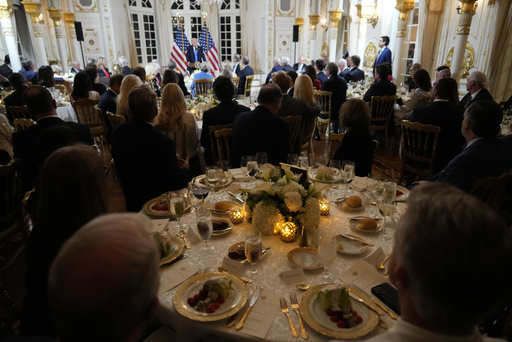
ATLANTA — The onset of Donald Trump’s second term has ushered in a wave of significant policy shifts and political declarations, resulting in a notable impact in both Washington and beyond. These developments primarily stem from his campaign’s “Agenda 47,” the Heritage Foundation’s Project 2025, along with the influence of various far-right entities close to Trump’s administration. Although several initiatives have been outlined and discussed during the campaign, many notable proposals remain unaddressed. Here is an overview of some of the major pending proposals.
One of the most striking initiatives includes the potential elimination of the Department of Education. This long-targeted Cabinet agency, created in 1980 under President Jimmy Carter, could face restrictions or even closure under an executive order currently being drafted by Trump’s aides. Trump has publicly expressed his desire for Education Secretary-designee Linda McMahon to “put herself out of a job.” However, the White House is currently navigating the complexities of dismantling an agency established by legislation and responsible for allocating substantial federal funds, including resources for low-income schools and student loans.
In the realm of reproductive rights, Trump has shown ambiguity regarding his abortion stance throughout his campaign. Although he previously asserted that his Supreme Court appointments enabled states to set their own abortion laws, he later hinted at backing a ban on abortions conducted later during pregnancy without specifying a timeline. Project 2025 outlines a range of proposals regarding abortion that would be handled by Robert F. Kennedy Jr. if approved as the Secretary of Health and Human Services. Suggestions include enforcing stricter regulations on abortion medications and potentially using the 1873 Comstock Act to restrict the distribution of abortion-related materials. Additionally, the plan advocates for stricter budget amendments that limit federal money for abortion services and proposes altering existing health care standards in emergency settings.
Trump’s educational policies are also notable. While the 2024 Republican platform suggests returning educational authority to states, it simultaneously promotes the idea of “universal school choice” and the eradication of teacher tenure—actions typically governed at the state level. Furthermore, Trump has indicated that parents should have the power to employ or dismiss school principals, decisions traditionally made by local officials. Although it’s unclear how these sweeping reforms would be executed, early indications suggest that Trump’s administration may attempt to leverage executive action instead of legislative processes to enforce such changes.
Trump has also voiced criticism of higher education, labeling many colleges and universities as hubs of radical ideology. He aims to reform the higher education accreditation process, claiming it as a tool for overhauling the system, while also targeting substantial university endowments through taxation measures. Though he hasn’t specified which institutions might be affected, many prominent universities boast endowments exceeding billions of dollars. In an ambitious maneuver, Trump proposes redirecting any seized funds into establishing a tuition-free online “American Academy” for all individuals seeking college-level credentials while barring any politically charged agendas.
On the economic front, Trump has made strides in imposing tariffs against China, propelling reciprocal tariffs but temporarily halting border tariffs affecting goods from Mexico and Canada. He has pledged to bring forward “The Trump Reciprocal Trade Act” aimed at mitigating trade deficits and boosting domestic production. Trump envisions returning to an era reliant on tariff revenues, promoting tax exemptions on various income types to alleviate financial burdens on households.
In addition, Trump’s administration appears poised to roll back numerous federal labor laws designed to protect workers. Project 2025 advocates for the elimination of revised overtime regulations and seeks to reduce benefits for gig economy workers. The document calls for weakening foundational labor laws, potentially reshaping collective bargaining and employment standards without substantial oversight. Proposed changes could also make it easier for young workers to engage in hazardous jobs while simultaneously limiting government scrutiny on workplace safety.
Finally, Trump has reiterated his ambitions to conclude the ongoing conflicts in Ukraine and Israel, emphasizing a swift resolution to these crises. His statements have included proposals for Europe to cover the costs incurred by the U.S. in aiding Ukraine, as well as suggesting that Ukraine should offer access to its rare earth minerals in exchange for continued military assistance.
These pending initiatives reflect the administration’s commitment to its agenda, which has significant implications for federal governance, education, reproductive rights, trade, and labor laws in the coming years. As these proposals evolve, they will undoubtedly shape the political landscape and the daily lives of many Americans.

